Deciphering the imagery by Rajat Kumar
Written by By Juhi Mathur
Throughout the history of art, artists have tried to decipher the aura of their surroundings whether it is a four-walled room or the cityscapes from a bird’s eye view. It was during the Rococo period, we saw an innovative fascination with the interiors, detailing every aspect of the luxurious surroundings during the late seventeenth and early eighteenth century. In a similar manner, Rajat Kumar’s artworks delineate the nuanced subtleties of the human condition.
His work delves into emotions stemming from urban experiences, marked by both passive and active human presence. Often captivated by the mundane and overlooked, Kumar seeks to capture not only the physical space but also the atmosphere and sensation of it. The city, with its routine encounters, serves as a continuous source of inspiration
.
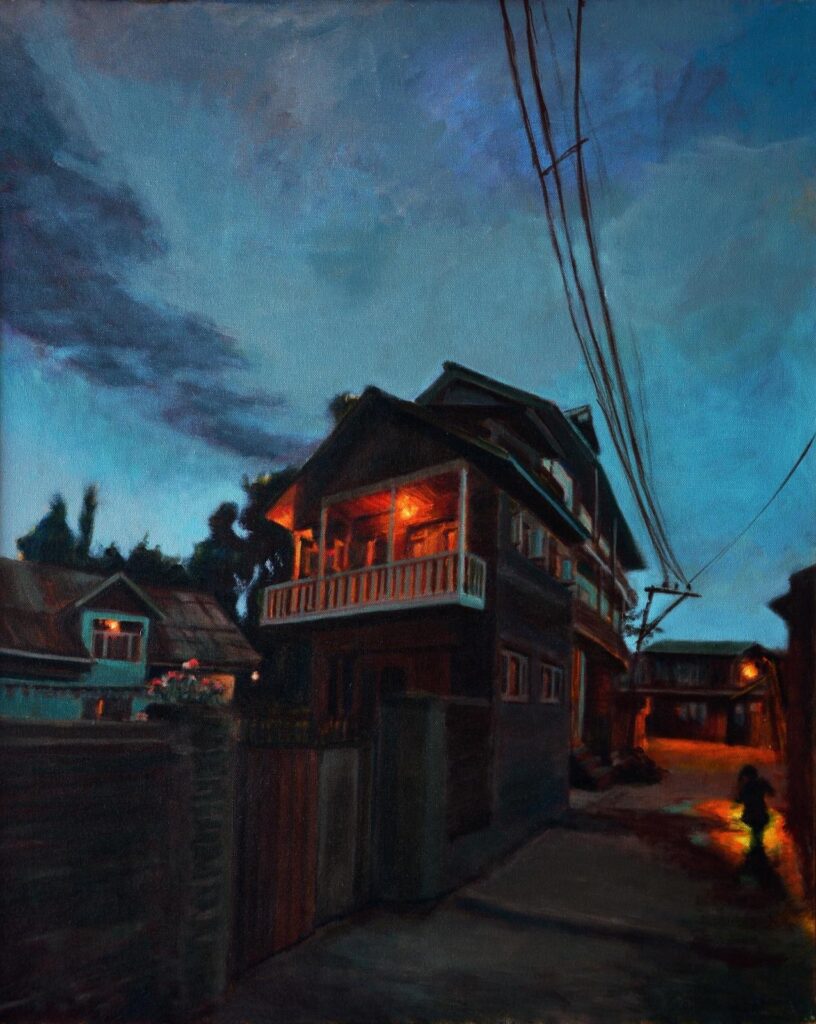
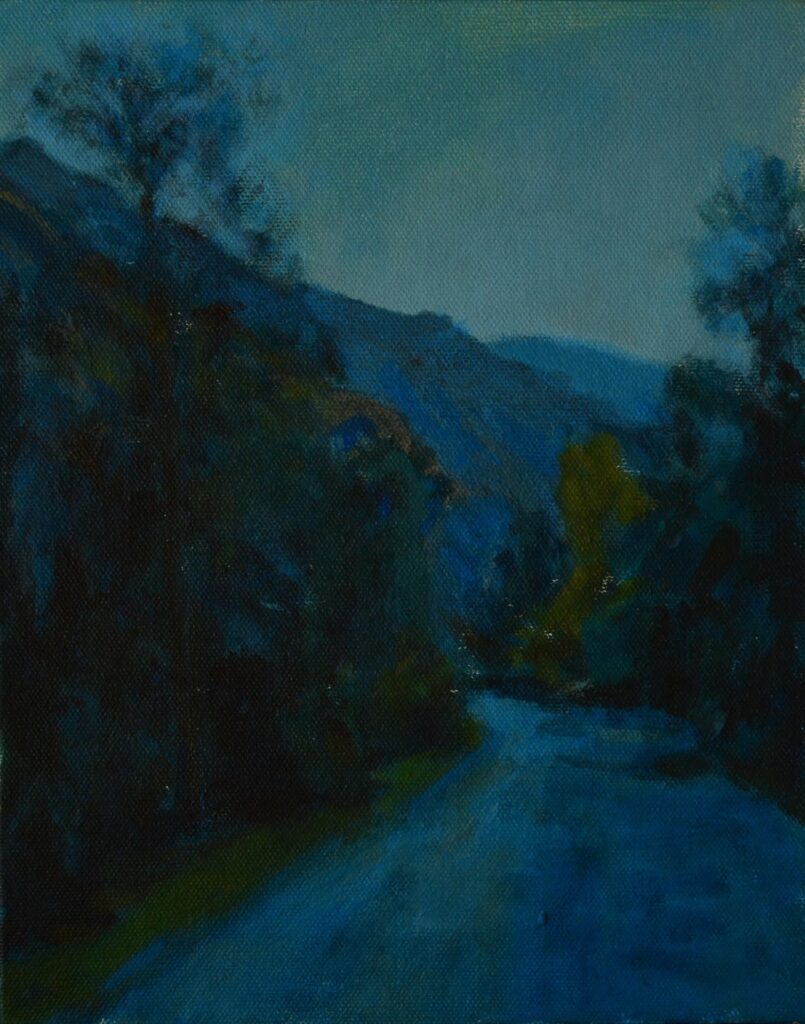
.
Originally hailing from an educational background in software engineering, Rajat’s brush with art began in the form of imitation, where he copied various sketches and paintings, and it was during his second year in college, when he visited his hometown, Meerut and studied with a professor from Santniketan. This experience in itself changed his perception towards the academic aspect of fine arts. After completing his bachelors in technology, and a few years in job, Rajat decided to pursue bachelors in fine arts from Delhi College of Art, New Delhi. His experience with pedagogical tools of fine arts shaped his vision around his practice, as he developed his sensibility around the subjects of portraiture, still life, and landscape painting.
During his academic training, Rajat’s visual vocabulary became more introspective as he started studying different branches of landscape painting, understanding the significance of colour in a compositions, which follows eastern ideals of painting whilst he draws inspiration from the works various artists from Romantic era, citing the bold and dramatic works by J.M.W Turner as a significant precursor for his experimentation with brushstrokes and colours, creating atmospheric visions that captured the subtle play of sunlight and the shadows. Rajat’s compositions let the colours weave a story bringing forth the nuances of a space and how it encompasses a sublime consciousness that inspires and transcends corporeal experiences. It is a form of idealisation of nature and its elements.
.
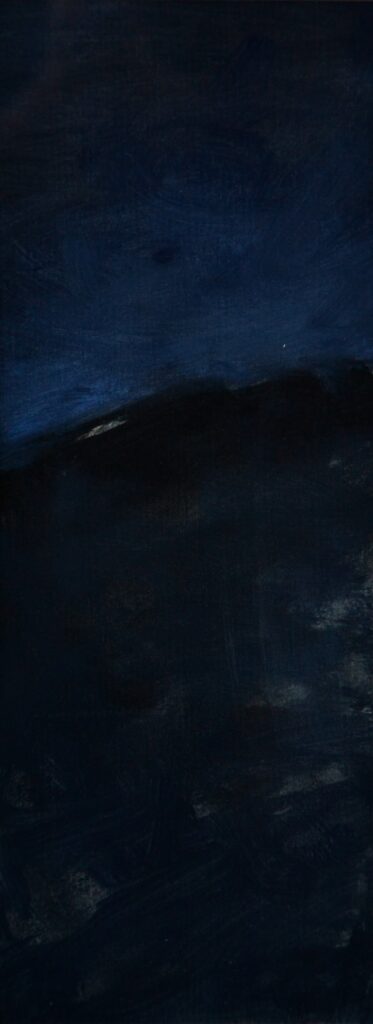
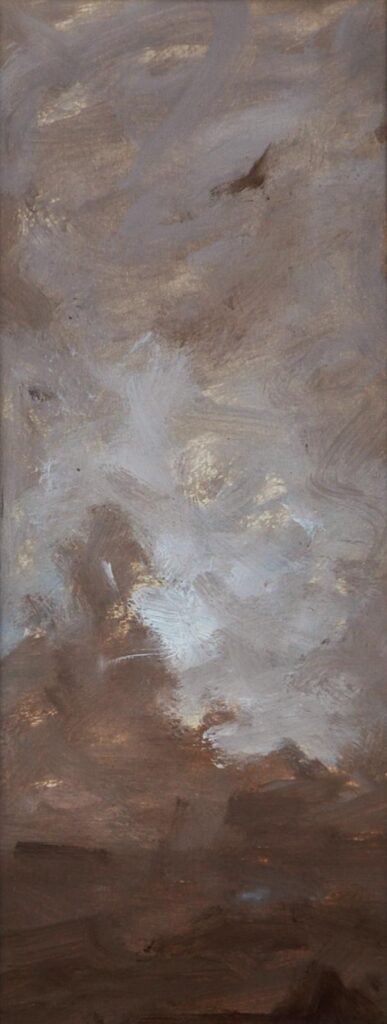
.
While witnessing an exploration of landscapes and hues through a romantic lens, Rajat has forayed in the genre of portrait painting where again the moods and emotions of a person become the main focus. He has discussed his studies of the Dutch Golden Age of painting, prominently the works by Rembrandt van Rijn, renowned Baroque artist who is known for his portrait studies, where he has favoured the moods and dramatic guises of his subjects, specifically employing the technique of chiaroscuro (Italian term for light-dark) referring to the balance between light and dark in a composition. The term came into use during the Renaissance, while defining the works by Caravaggio and his successor from the Dutch region, Rembrandt, where the shadows played an important part in delineating depth on a two-dimensional surface. Similarly, in Rajat’s visual narratives when he brings forth multiple facets of human existence whether in a city or in their domestic space, there is a looming presence of shadows that define the space, allowing the observor into private spaces. This play between light and shadows acts as a tool of revelation, as finer details become noticeable on closer examination. Each image becomes a deeper commentary on the solitude of modern life and how it is impacted by technology, and the ripple effects of evolving socio-cultural norms of existence and personhood.
.
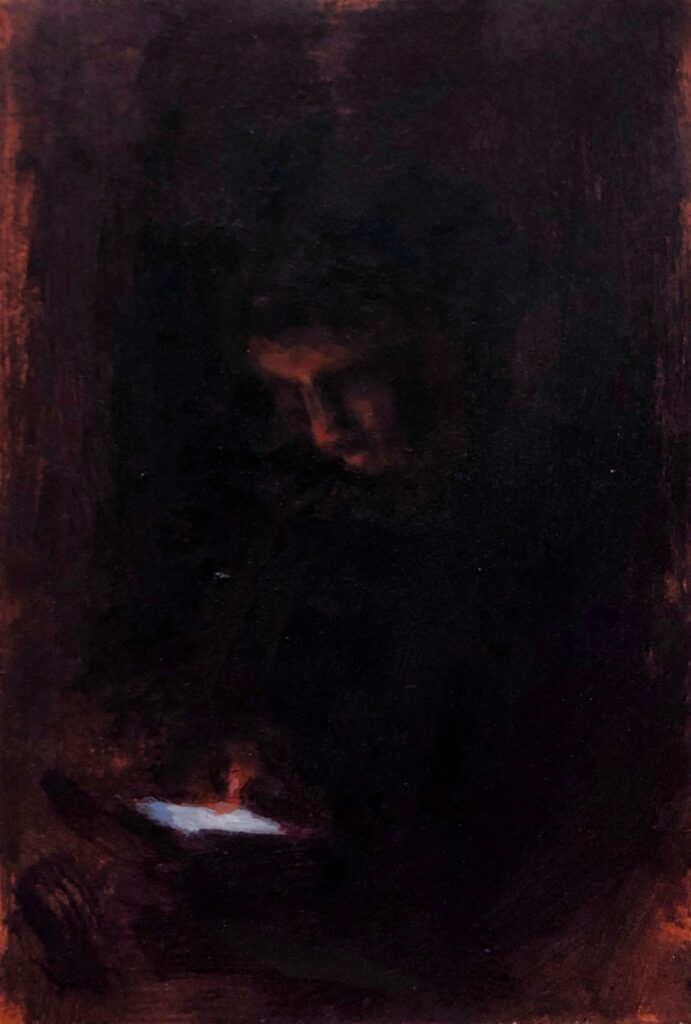
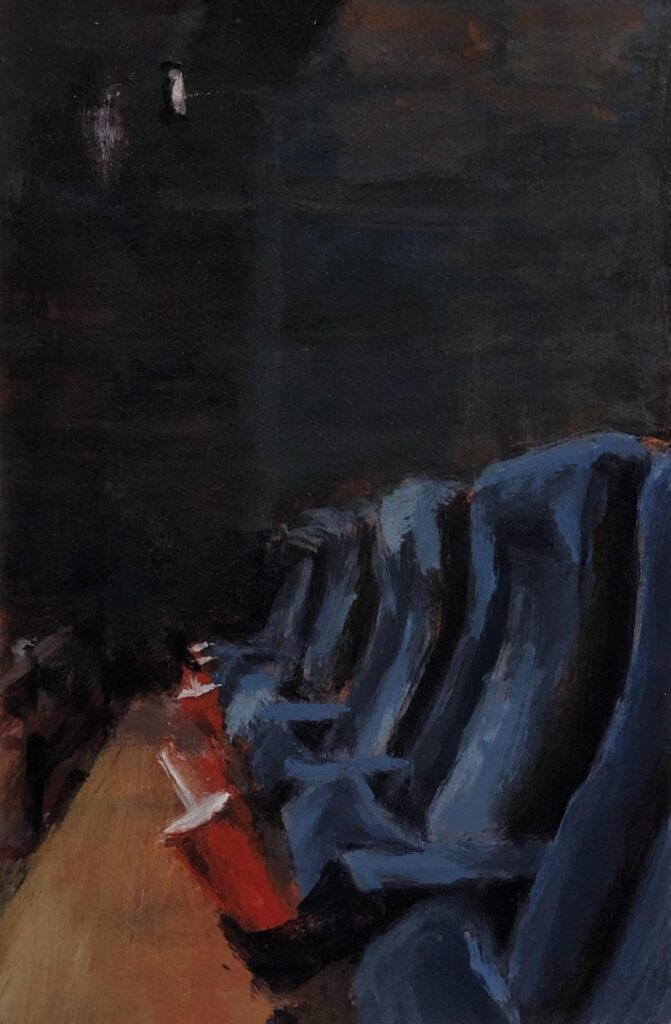
.
Rajat’s visual vocabulary is a response to the life around him, specifically his inner thoughts that materialise as observations and ruminations, he has mentioned how the pandemic forced him to explore his domestic spaces into more depth. The silence inside a house and the interactions between the occupants became the main subjects of study. The small-scale paintings in acrylics and watercolours also showcase Rajat’s understanding of hues and shades as he infused life into mundane moments of a day; capturing the essence of leisure and rest. He has cited that his study of the works by Edward Hopper and David Hockney, while Hopper’s upbringing in america and brush with illustration was widely different from Hockney’s entanglements with stage designing and fine arts, both the artists were presenting life in a realist manner. Rajat felt the emptiness that filled Hopper’s paintings inspired him to explore the mundane spaces, finding inspiration in everyday life, and Hockney’s expression with more pop elements. During the pandemic in 2020, David Hockney began a series of digital works on Ipad capturing the bucolic beauty of Normany in an en plien air fashion which is a direct successor of the impressionist movement among the French artists. Rajat’s series of works began with a photographic documentation of Delhi and his home where the impressionist brush strokes define his painterly experimentation.
.
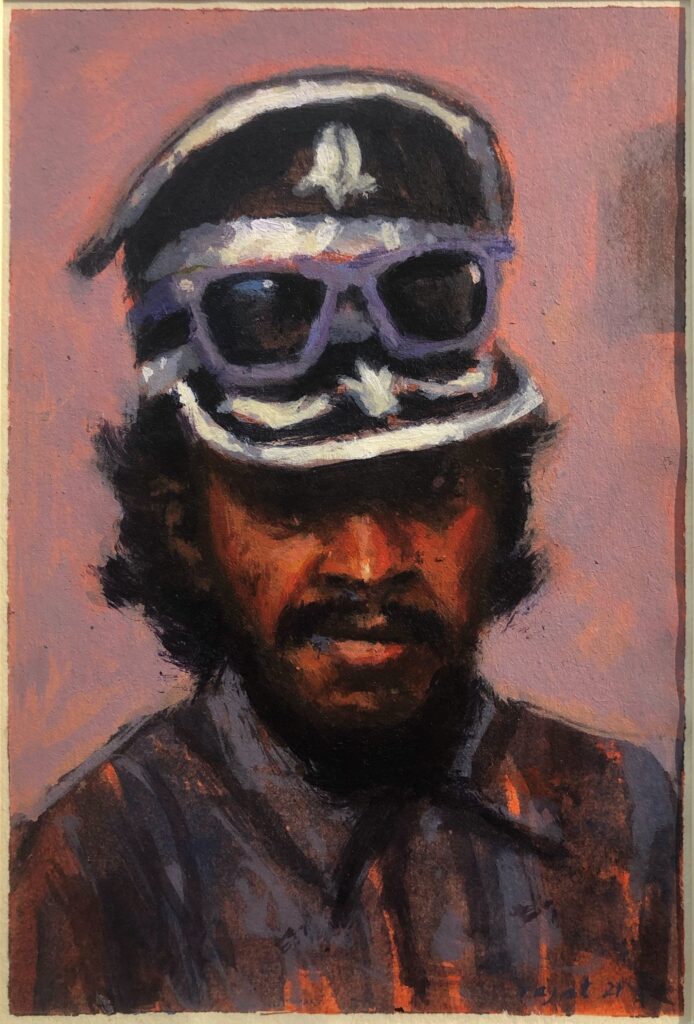
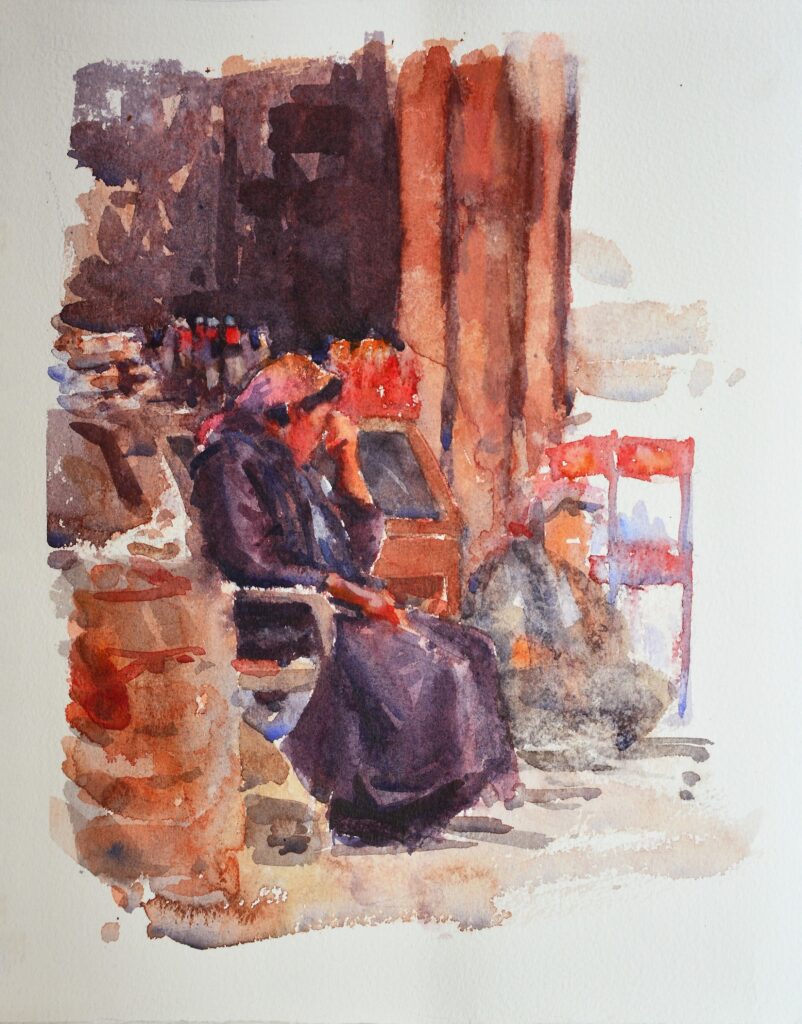
.
In addition to the exploration of his visual vocabulary, Rajat’s works also peel the layers of subconscious human interaction. It was not until the 1910s that art historical data was scrutinised under the lens of psychoanalytic theories by Sigmund Freud. He felt that artistic expression is a form of wish fulfilment. and on further examination, each visual narrative revealed deeper unconscious thoughts of an artist and the culture around him. Rajat has employed his observations of the world around him in a similar manner, they reveal his perspectives and relationship with people and spaces in a subtle manner, making an effective commentary on the spectrum of introversion and human psyche.
When we are analysing the technical skills that pervade the portraits and landscapes, each visual cue is a signifier of deeper experimentation where each stroke of brush reveals a hidden truth.
Rajat has cited the influence of the works by Francis Bacon and Lucien Freud, who were friends and artists and they both were experimenting with figuration and expressionism in different manner, while their peers were investigating the realms of abstraction. Both of them dabbled with figuration focusing on the spectrum of human expression and existence. In a similar creative vein, Rajat’s practice also deciphers his relationship with the corporeal world of human relationships while navigating the temporal world of unconscious mind, – desires, needs, and circumstances that are defined by contemporary events. This makes his works relatable and universal, where the visual language is malleable and can be projected on a myriad of life experiences.
.
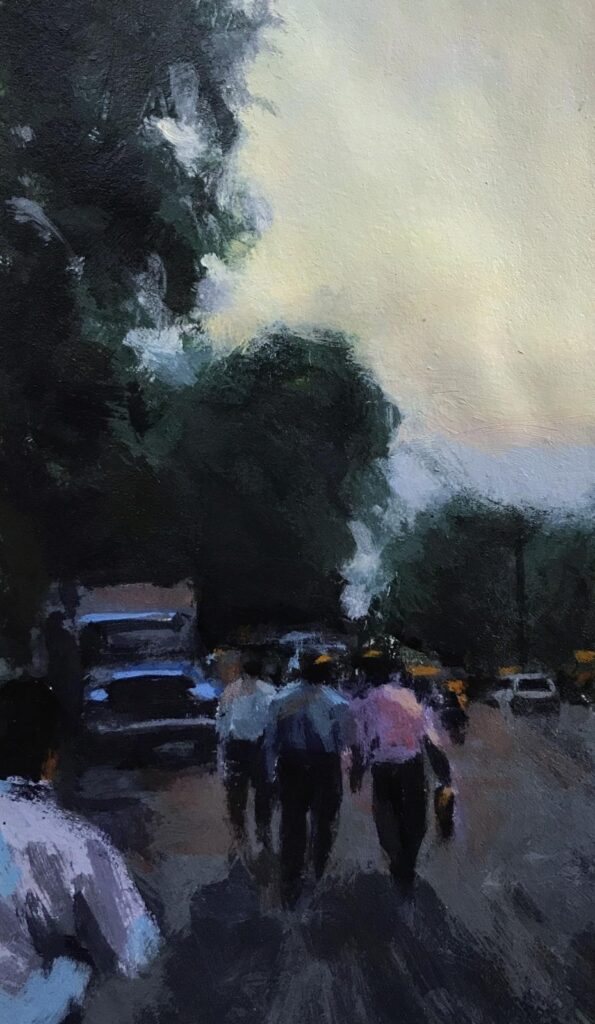
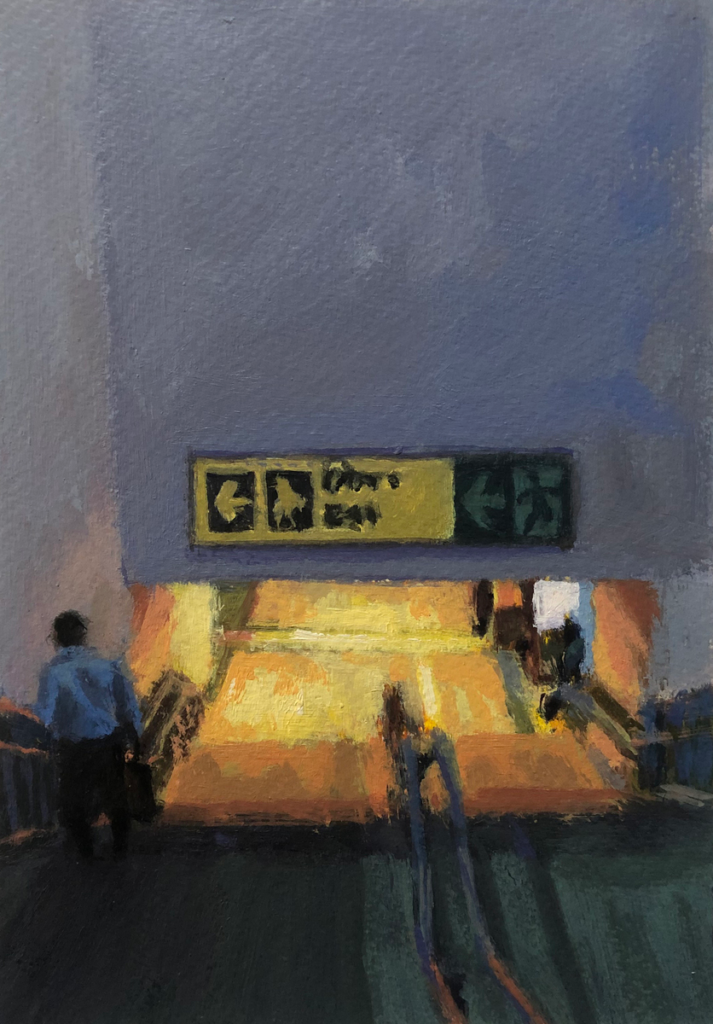
.
Although each artwork functions as a page from Rajat’s personal journal, they speak a language that can be understood by people from different walks of life, and this brings us closer to his experiences and perspective while connecting it over our lived experiences through art and creative expression. He has celebrated the mundane moments of life while he uses his understanding of expressionism and realism to manifest glimpses of life and its cacophony in a subtle composition which takes away any extra element and brings forth the main subject which might be unnoticeable in our day-to-day lives, but its impact reverberates throughout in our lives and in our actions.
.
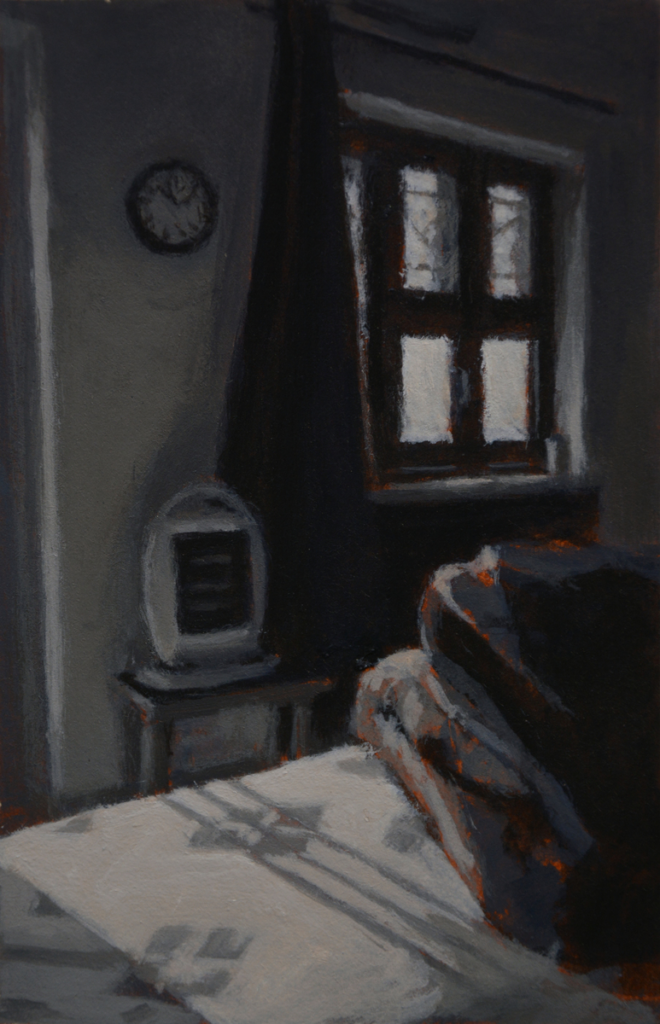
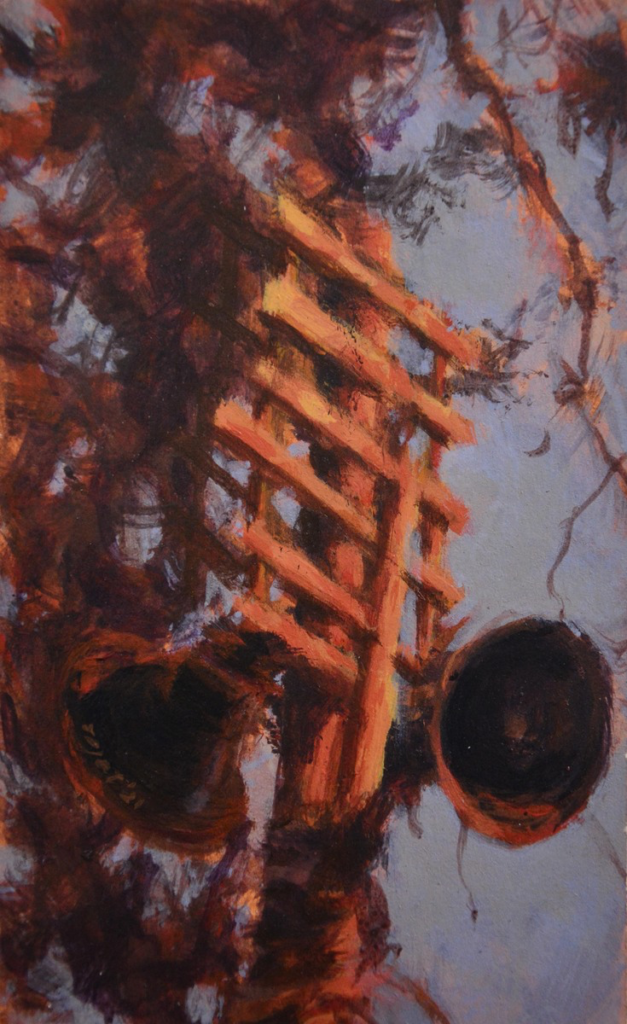
.
About the artist:
Rajat Kumar born in 1988 in Meerut, U.P, after completing his BTech in Computer Science from Amity University, Noida in 2011, decided to follow his inner calling and pursued BFA from Delhi College of Arts, New Delhi (2017), followed by MFA from Subharti University, Meerut (2020). Rajat’s practice showcases his expertise with the medium itself while also providing an in- depth idea of his observant gaze.
Rajat approaches painting from a perspective where emotion takes precedence while treatment and application become secondary. He tries to stay sensitive to the mood of the painting so that it has a soul of its own, by using traditional materials, colours, brushes, rollers, and scrapers on board, canvas, or paper. He usually works from the photo journals that he collects and uses them as the building blocks for the creation of his work, bringing forth subtle beauty of personal spaces.
